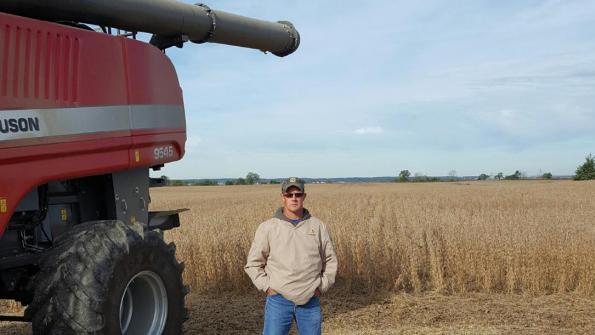November 17, 2016

Think different
Be aggressive with your chemical weed control.
If you go no-till, commit and don't look back.
Make soybean field weed control the priority.
---
Jason Mouser and his brother Eric count themselves fortunate with their glyphosate- resistant giant ragweed and marestail pressure. Other growers in the Ridgeway, Ohio, area have those two as well as growing pressure from velvetleaf, cocklebur, foxtail and more. Not that giant ragweed and marestail aren't problem enough.
"Year after year, the giant ragweed remains a problem with escapes in certain fields and especially along field edges," says Jason Mouser. "We've heard horror stories about resistant marestail. We have it, but so far we've stayed on top of it."
Avoid tillage
While he admits tillage would make a good tool for cleaning up the ragweed escapes, Mouser says control of other weeds alone outweighs the temptation. "We used to have more velvetleaf, lambsquarter, burdock and foxtail than we do now," he says. "No-till really helped eliminate them. However, you have to be committed and not chisel or deep rip every second or third year. "
While the no-till is an important tool, Mouser gives a lot of credit to the multiple mode and multiple stage herbicide program put together by Gary Campbell, their Sunrise Co-op agronomist. It is the same program Campbell uses to keep resistant weeds out of fields in his own farming operation.
"We start with a fall application of metribuzin and Brash on ground going into soybeans," says Mouser. "As soon as the ground will allow in the spring, we apply Sonic, Shredder 2,4-D LV6 and Durango. If we need a post, we'll use straight glyphosate, even though we know the ragweed on field edges is resistant."
"Dandelions have always been a problem in this area, but a fall application also takes care of them," notes Campbell.
Keep bean stubble clean
Fields going into corn the following spring are likely to get a shot of Brash in the fall if early spring shepherd's purse is expected to be a problem. Just as the corn is spiking through, they hit it with a mix of Surestart, atrazine and glyphosate.
"They keep their bean stubble so clean there is no need of any burndown," says Campbell.
Most years there is also no need for a later post application either. This past spring, a dry spell after planting kept the early post program from activating.
"We did come back with some glyphosate on corn this year," says Mouser.
Mouser gives credit to the addition of AMS and Interlock on every acre of soybeans and corn alike. "The AMS heats up the chemistry a bit and the Interlock creates better penetration and leaf absorption," he says. "You can see the Interlock at work in the mist coming out of the nozzles."
About the Author(s)
You May Also Like




